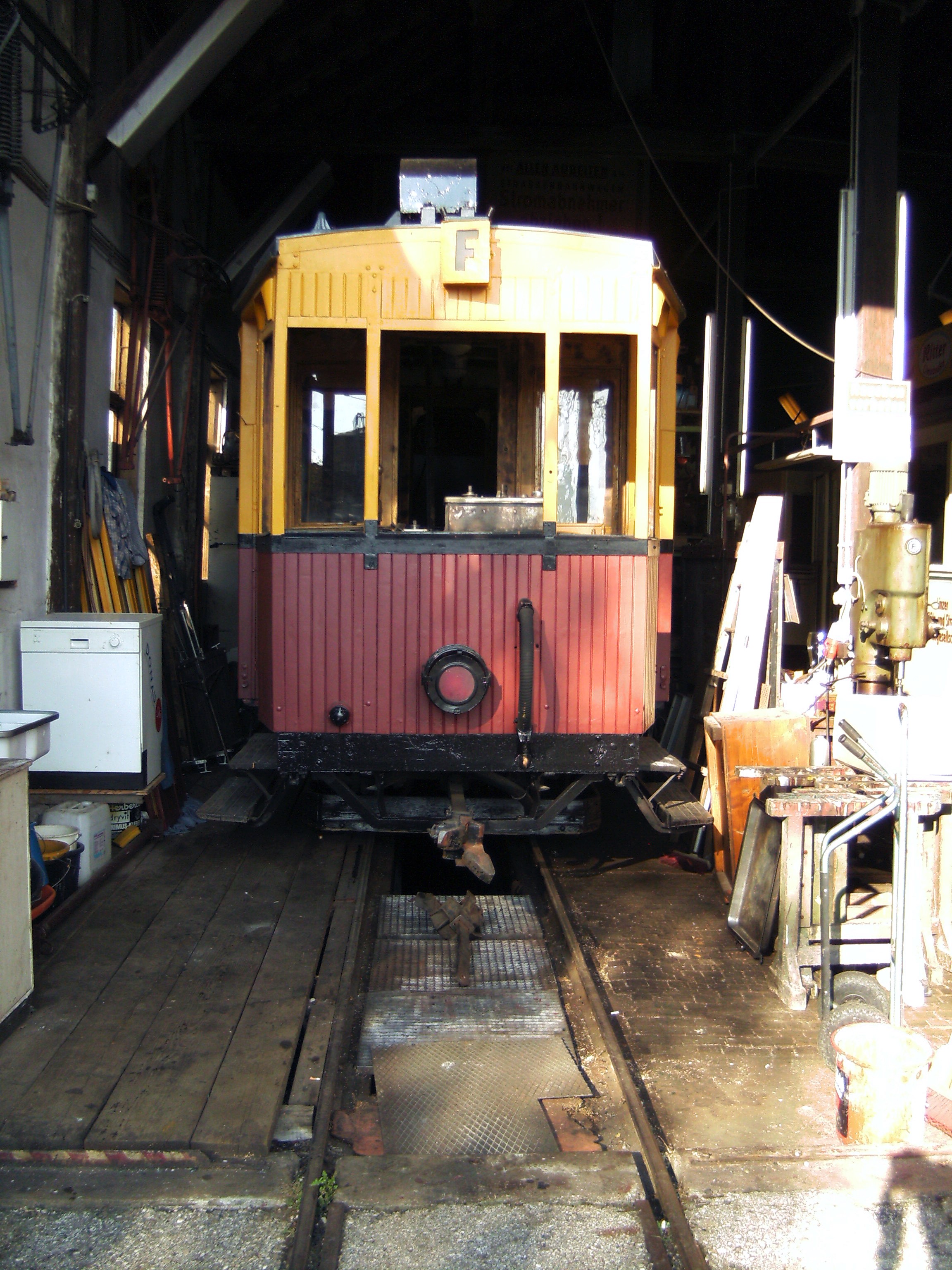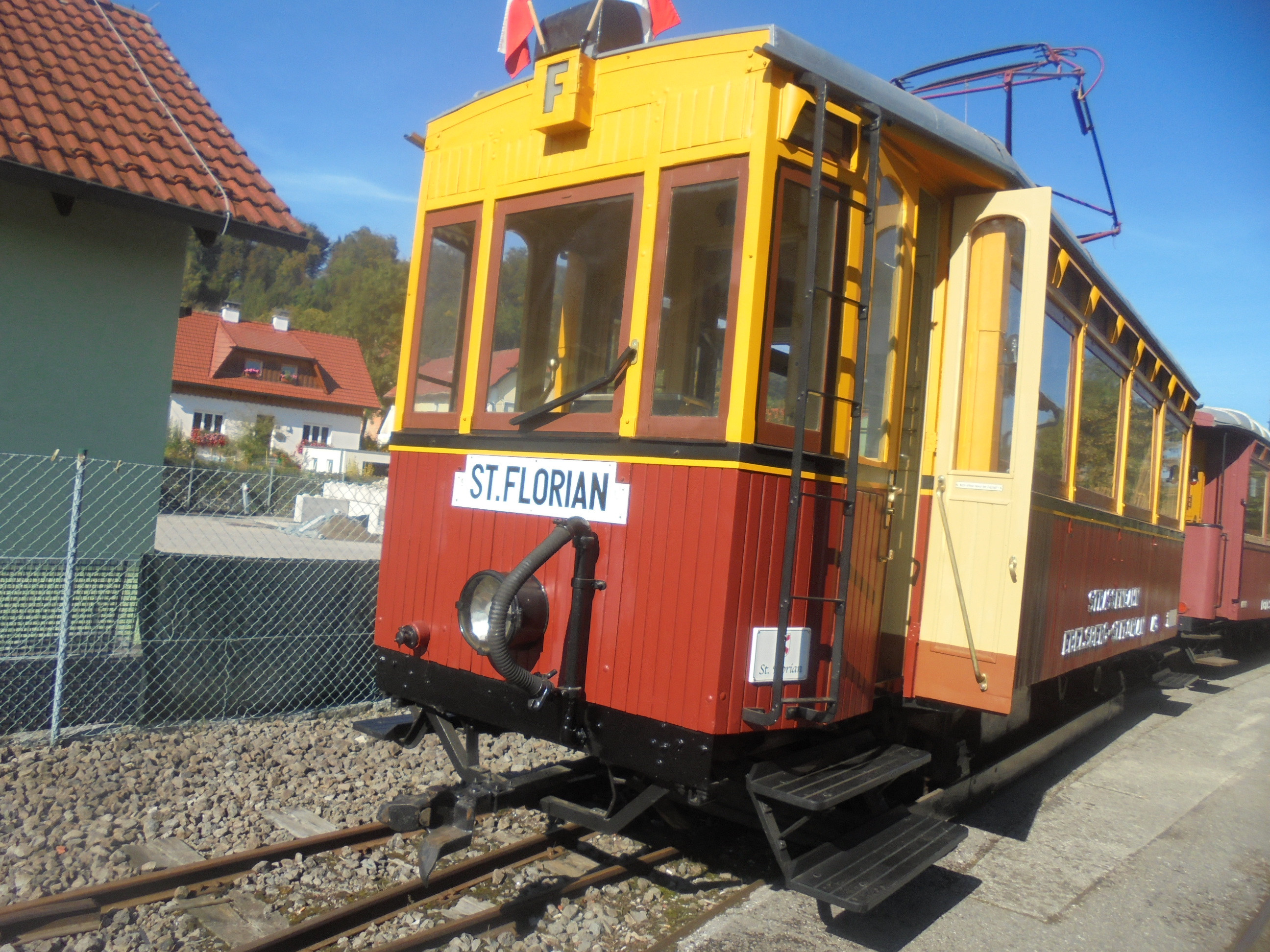Florianerbahn on:
[Wikipedia]
[Google]
[Amazon]
The Florianerbahn is a museum tramway in  After the fall in passenger numbers and the cessation of services on 31 December 1973 the line was taken over by the Austrian Society for Railway History (ÖGEG), and later by the ''Club Florianerbahn'' society and a section of the line reactivated as a
After the fall in passenger numbers and the cessation of services on 31 December 1973 the line was taken over by the Austrian Society for Railway History (ÖGEG), and later by the ''Club Florianerbahn'' society and a section of the line reactivated as a

 The line was worked by the following vehicles until it closed in 1973:
The abbreviations had the following meaning:
* EM – Ebelsberg Motorwagen (power car)
* EP – Ebelsberg Personenwagen (coach)
These designations were not written on the vehicles themselves.
The line was worked by the following vehicles until it closed in 1973:
The abbreviations had the following meaning:
* EM – Ebelsberg Motorwagen (power car)
* EP – Ebelsberg Personenwagen (coach)
These designations were not written on the vehicles themselves.
Florianerbahn Society
{{coord, 48, 14, 0, N, 14, 22, 28, E, type:landmark_region:AT, display=title 900 mm gauge railways in Austria Heritage railways in Austria Railway lines opened in 1913 1913 establishments in Austria-Hungary
Upper Austria
Upper Austria (german: Oberösterreich ; bar, Obaöstareich) is one of the nine states or of Austria. Its capital is Linz. Upper Austria borders Germany and the Czech Republic, as well as the other Austrian states of Lower Austria, Styria, a ...
that is not operational due to construction work. It was built as a railway - a licensed narrow gauge ''Lokalbahn'' or branch line - between the independent commununity of Ebelsberg (today a district within Linz
Linz ( , ; cs, Linec) is the capital of Upper Austria and third-largest city in Austria. In the north of the country, it is on the Danube south of the Czech border. In 2018, the population was 204,846.
In 2009, it was a European Capital of ...
) and Sankt Florian. It was owned by the ''Lokalbahn Ebelsberg–St. Florian AG'', but operated by the firm of Stern & Hafferl
Stern & Hafferl Verkehrsgesellschaft m.b.H. is a transport company operating train, bus and boat services in Upper Austria, Austria. The company operates of standard gauge railway and of narrow gauge railway. Until December 2009 Stern & Hafferl ...
from Gmunden
Gmunden () is a town in Upper Austria, Austria in the district of Gmunden (district), Gmunden. It has 13,204 inhabitants (estimates 2016 ). It is much frequented as a health and summer resort, and has a variety of lake, brine, vegetable and pine-c ...
. Because the line had the character of a tramway (''Überlandstraßenbahn'') it switched over to providing tramway services in the wake of the annexation of Austria in 1938 – along with Stern & Hafferl's sister companies ''Elektrische Lokalbahn Unterach–See'' and ''Elektrische Lokalbahn Gmunden''.
The rail gauge is the same as that of the Linz tramway, , the line is electrified, operating at 600 V C. It ran regular services from 2 September 1913 to the end of 1973. From 1929 it was connected directly to the Linz tramway network at Ebelsberg, so that trailer coaches could run through from Linz to St. Florian.
The line was officially opened on 1 September 1913. The specially decorated first train, consisting of a railcar and two carriages, left Sankt Florian at 6:22 and arrived at Ebelsberg at 6:50. 42 of the 96 places available were taken.
 After the fall in passenger numbers and the cessation of services on 31 December 1973 the line was taken over by the Austrian Society for Railway History (ÖGEG), and later by the ''Club Florianerbahn'' society and a section of the line reactivated as a
After the fall in passenger numbers and the cessation of services on 31 December 1973 the line was taken over by the Austrian Society for Railway History (ÖGEG), and later by the ''Club Florianerbahn'' society and a section of the line reactivated as a museum railway
A heritage railway or heritage railroad (US usage) is a railway operated as living history to re-create or preserve railway scenes of the past. Heritage railways are often old railway lines preserved in a state depicting a period (or periods) i ...
. there were no museum services because much of the route is not usable: between Pichling and Bruck the line runs under the Western motorway and had to be lifted whilst construction work is going on. The track has since been replaced, but the catenary is still missing. Between Pichling and Ebelsberg a large section of the overgrown tracks has been removed to build a ring road and has not been fully replaced. The museum's vehicle collection in St. Florian can be visited if notice is given.
Vehicles
 The line was worked by the following vehicles until it closed in 1973:
The abbreviations had the following meaning:
* EM – Ebelsberg Motorwagen (power car)
* EP – Ebelsberg Personenwagen (coach)
These designations were not written on the vehicles themselves.
The line was worked by the following vehicles until it closed in 1973:
The abbreviations had the following meaning:
* EM – Ebelsberg Motorwagen (power car)
* EP – Ebelsberg Personenwagen (coach)
These designations were not written on the vehicles themselves.
Sources
* Helmut Weis: ''Die Unternehmung Stern & Hafferl III''. Bahn im Bild, Band 80, 1991 * Wolfgang Kaiser: ''Straßenbahnen in Österreich''. GeraMond Verlag, 2004External links
*Florianerbahn Society
{{coord, 48, 14, 0, N, 14, 22, 28, E, type:landmark_region:AT, display=title 900 mm gauge railways in Austria Heritage railways in Austria Railway lines opened in 1913 1913 establishments in Austria-Hungary